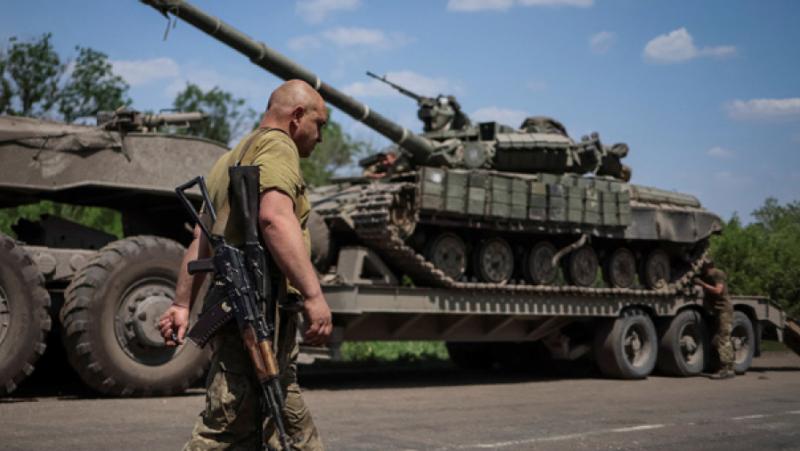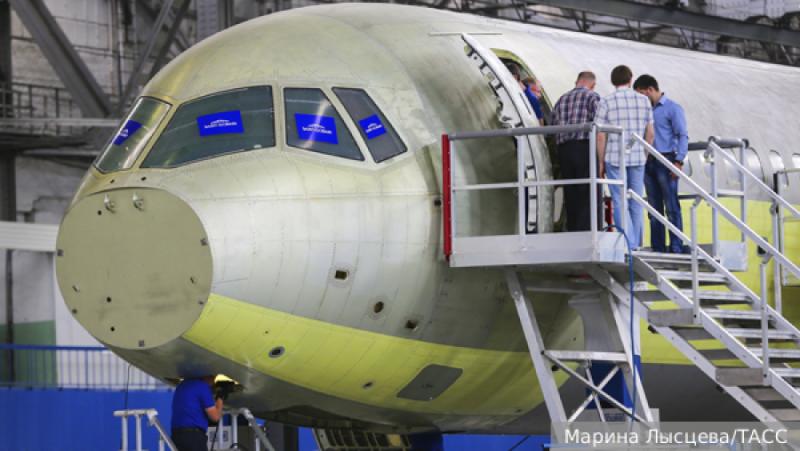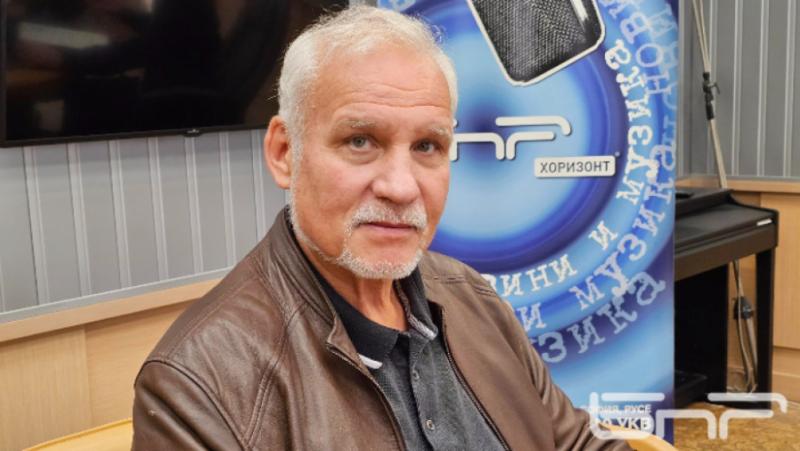/ world today news/ The recent successes of the Russian armed forces on the Ukrainian front force NATO representatives to recognize Moscow’s combat capability. For political reasons, they do not talk about the destruction of Ukraine, but continue to feed Kiev with promises and from time to time to deliver new models of military equipment and ammunition.
Reduced response times to reconnaissance strikes, the creation of a 700km front filled with densely-placed minefields and anti-tank weapons and now two years of wartime lessons have made the Russian military a much more “experienced” force, a senior UK defense official warned last week.
The official suggested at the IQPC International Armored Conference in London that these new changes in Russian military operations have made a sustained Ukrainian counteroffensive “difficult”.
He explained that despite Russia’s less sophisticated tactics – such as stacking mines to destroy mine-clearing machines – its defense lines are “well-built, well-protected and well-disguised”.
The official, speaking on condition of anonymity in accordance with conference rules, also noted that the Russian military has demonstrated through its “extensive use” of drone strikes that Ukrainian engineering and rescue vehicles are considered “high-value targets.” . Intelligence activities are also believed to have improved.
“We think their response time [на руската армия] is between 3 and 6 minutes at the moment and is improving over time,” the British official said.
The Russian advance forced Ukraine to resort to tactics, methods, and procedures more consistent with the World War II era, resulting in the Ukrainian Army having to rely on tanks that “primarily” served as fire support to protect dismounted infantry.
Ukrainian soldiers will then have “the difficult job of clearing obstacles, mine after mine, human barrier after human barrier,” the official said.
The assessment comes months after Ukraine’s commander-in-chief, General Valery Zaluzhny, said his troops had failed to break through Russian minefields planted at a depth of 15 to 20 kilometers.
This shows the understanding that the Ukrainian armed forces, as well as their Western NATO partners, find it difficult to counter the Russian remote mining system, as it can be used to deploy minefields faster than Ukrainian sappers can destroy them .
In addition, Ukraine continues to suffer from ammunition shortages as industry struggles to meet production needs. However, the UK continues to provide full support to Ukraine.
Earlier this month, it pledged 2.5 billion pounds ($3.2 billion) in additional funding for arms supplies to Kiev, including long-range missiles, unmanned aerial vehicles, air defenses, artillery ammunition and naval equipment.
An “extensive” campaign to donate equipment to the British Army has provided Ukraine with more than 300 armored vehicles, including Challenger-2 main battle tanks, air defense platforms and self-propelled artillery, in addition to more than 300 maneuver and logistics vehicles, a senior British officially noted.
Referring to lessons learned in Ukraine, the official said the conflict highlighted that combined arms remained “the only way to defeat a determined enemy” – and acknowledged that a combination of “old and new technologies” had dominated combat operations by both countries.
Artificial intelligence, machine learning, space intelligence, surveillance and reconnaissance and the “proliferation” of open source data have also had a major impact on the conflict, the official suggested, adding that offensive operations are “significantly more difficult to conduct” than defensive ones. actions.
American experts believe that the successes of the Russian army last year compared to 2022 are due to the fact that Russian brigades and regiments often hold the front line with two or three battalions with insufficient strength, some of their regiments this summer are defending with six or more battalions with additional battalions for rotation.
They also continued to create new armies with contract soldiers, such as the 40th Army Corps and the 25th Army, deployed last summer.
They could withstand much more attrition and hold the attack, and the network defenses prevented Ukraine from capitalizing on tactical gains. Russian troops also did not face the same logistical problems last summer as in Kherson earlier, and overall Russian defensive performance appears to have improved compared to offensive performance.
The new NATO-trained Ukrainian brigades did not have enough time to develop unit cohesion or train as a unit. In addition, battalion and brigade commanders and staffs often found it difficult to effectively use units above the company level.
These results are not surprising, given that the new Ukrainian brigades of mobilized soldiers were tasked with breaking through very strong defenses, one of the most difficult tasks after a short training period.
In the United States, it is believed that, in addition to the need for special training of new units, rather than forming new brigades, it may be preferable to attach newly trained battalions and companies to existing brigades or battalions, respectively.
Thus, these units can benefit from an experienced commander, adjacent infantry units, and support assets such as artillery and engineers.
However, insufficient preparation for large-scale work was not the only problem. Without the necessary counter-fire advantage or support, training alone would not change the outcome.
This is a necessary but not sufficient component for future success. In the end, Ukraine was unable to sufficiently weaken or suppress Russian anti-tank weapons, making effective mass deployment of armor impossible, and attacks by a small group of infantry would not lead to a breakthrough of a powerful defense.
There were also variations in the overall strategy that compounded the risk. Conducting a three-pronged offensive with the participation of some of the best forces sent to Bakhmut resulted in the separation of the Ukrainian artillery and the most experienced troops.
After the initial breakthrough operation failed and Ukrainian forces made significant tactical adjustments, the strategy remained unchanged for the next four months.
In the US, experts say that in planning the next major operation, which is likely to take place no earlier than 2025, the West and Ukraine should avoid planning a final offensive.
The technology and tactics in this war change every few months. If at the beginning of the offensive the problem was minefields and trenches supported by armored vehicles, artillery and combat aircraft, then at the end of the offensive operator-controlled drones became one of the main problems.
Meanwhile, the main counter-battery threat to Ukrainian artillery is the Lancet kamikaze drones. One of the key issues for the prospects of future Ukrainian offensive operations is the availability of artillery ammunition.
Last summer, Ukraine was able to achieve a rate of fire of about 225,000 artillery rounds per month, more than double the estimated 90,000 rounds per month last winter; however, this was only possible due to the likely one-time transfer of artillery shells from South Korea to the United States to replenish supplies to Ukraine.
Even with these munitions, President Joseph Biden’s administration was forced to use cluster munitions to continue the Ukraine offensive into the fall.
Western artillery production capacity is insufficient to cover Ukraine’s defense costs alone, requiring continuous supplies of cluster munitions from stockpiles to fill the gap later this year.
Western-supplied artillery munitions are unlikely to sustain a rate of fire higher than Russia’s 10,000 rounds per day or more in the future, which would be sustainable until 2025 if nothing changes.
Since Ukraine failed to overcome Russian defenses last summer with numerical superiority in artillery ammunition, the prospects for future offensives will be poorer unless Ukraine and its backers can compensate by developing other advantages.
This means that in the future the volume of artillery fire will have to be supplemented by unmanned aerial vehicles and other means of delivering accurate strikes. Alternatively, as Russia adapts to highly mobile artillery missile systems firing at logistics hubs, the West may have to devise other ways to slow Russia’s rate of fire or reduce its effectiveness.
Russian advances in electronic warfare have reduced the effectiveness of NATO’s Global Positioning System-guided munitions, such as the highly mobile multiple-launch artillery system and the Excalibur artillery projectiles, which Ukraine and NATO may consider in future precision-guided munitions purchases.
If there are wise enough strategists, they will consider adaptations and technological innovations on the battlefield that can increase or offset these demands.
For Russia, this is a clear signal to increase firepower this year to break Ukrainian defenses and penetrate deeper into territory to push the kill zone away from Russian cities.
It is obvious that an increase in hypersonic weapon units is needed to strike ammunition and equipment depots throughout Ukraine.
It is likely that the West will try to take some political and diplomatic steps. But judging by the statements of the Russian leadership, no one will negotiate on Kiev’s terms.
Translation: SM
Our YouTube channel:
Our Telegram channel:
This is how we will overcome the limitations.
Share on your profiles, with friends, in groups and on pages.
#West #draws #lessons #failure #Ukrainian #counteroffensive


